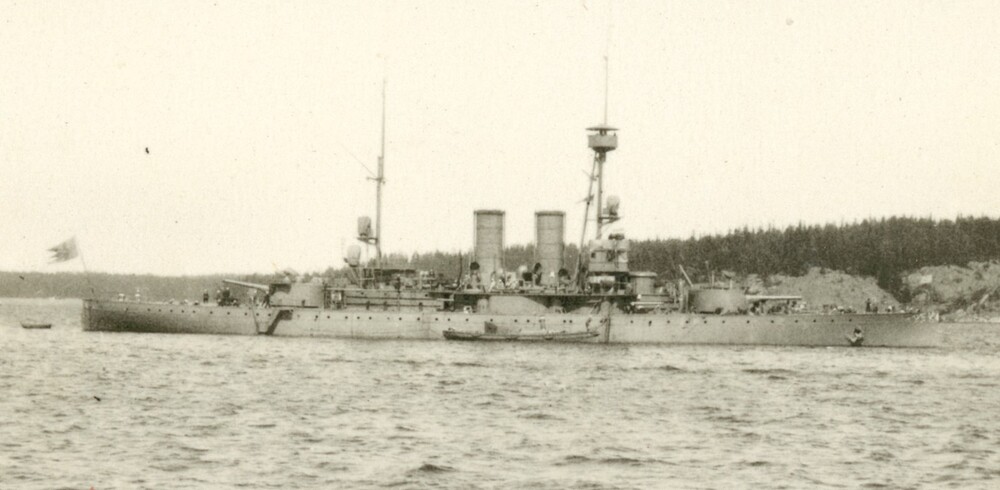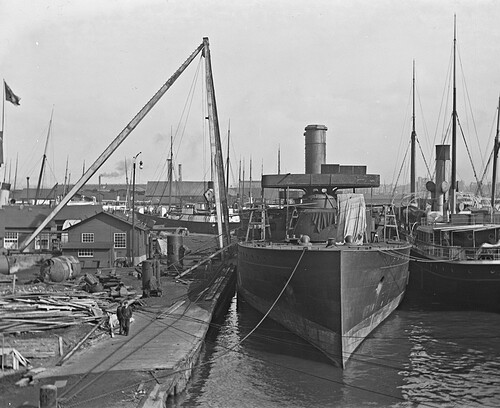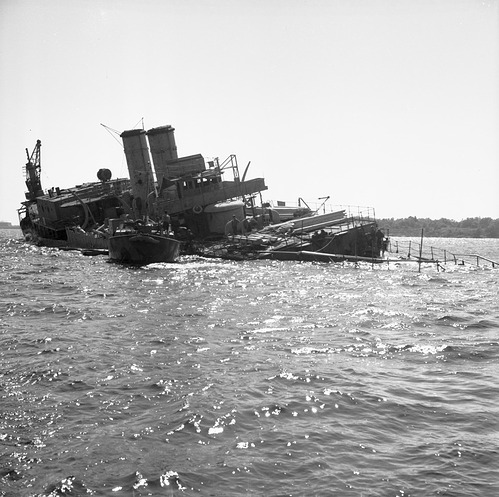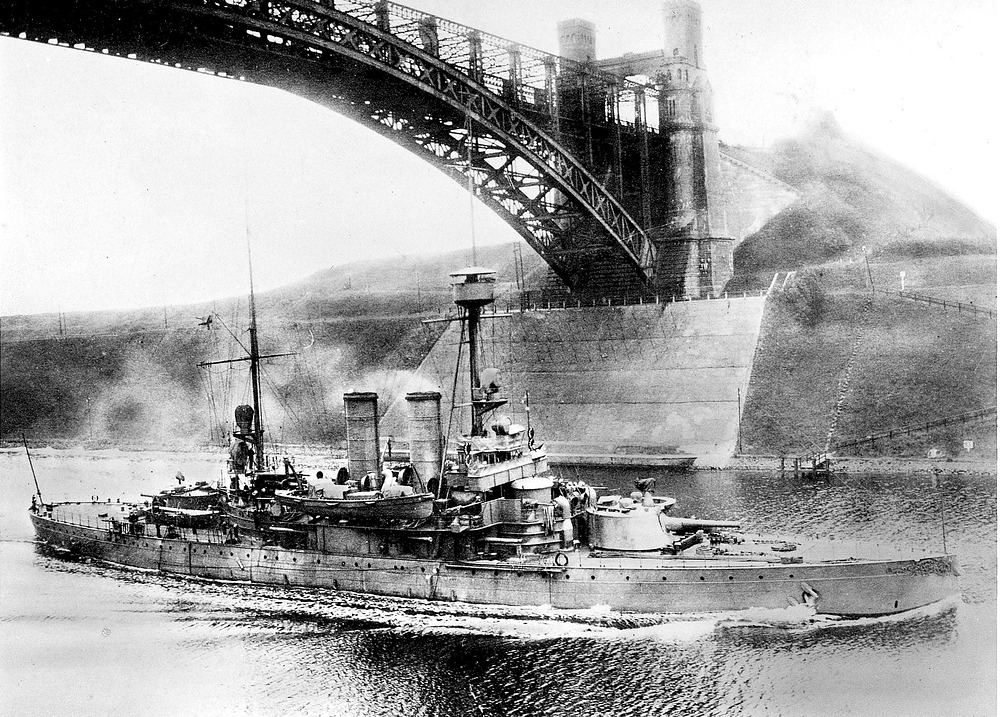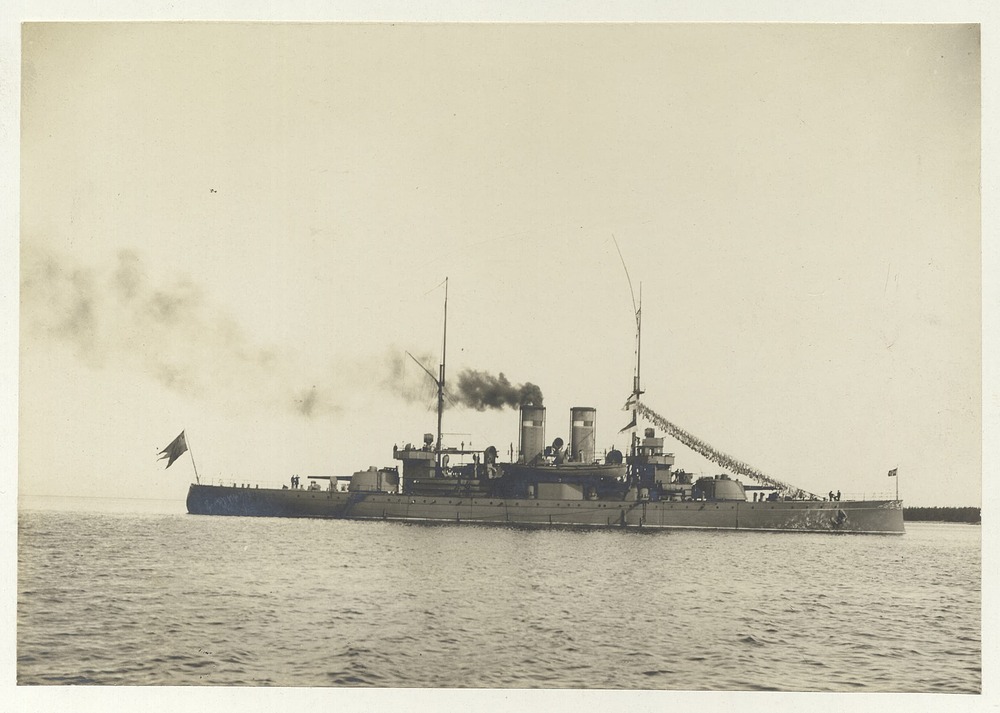H.M Pansarbåt Dristigheten (1922)
- Yes
- No
H.M Pansarbåt Dristigheten (“The Boldness” or “The Audacity” translated to English) was a pansarskepp (Armored ship, commonly referred to as Coastal defense ship) in the Swedish navy who served between 1901 and 1947. Built at Lindholmens varv in Göteborg between 1899 and 1901, she was made to take advantage of the newest developments in warship construction and design as well as to support the Oden class pansarskepp that were not yet delivered to the navy. Dristigheten was delivered to the navy in 1901 and would end up being the only one of her class, though her design would help the later Äran class see the light of day. Dristigheten would serve in the navy as a Coastal defense ship until 1927 when she was rebuilt into a seaplane tender, serving in this role until 1947 where she was put out of service, used as a gunnery target and later scrapped in 1961.
History
The story begins in 1896, the development in naval technology and warship design was rapid and the Swedish navy was trying to keep up on the slim budget they had. The recently ordered Oden class was a step up from the existing Svea class pansarskepp, but they were missing newfound discoveries in warship design such as the importance of a powerful secondary armament and quicker firing cannons. As such the navy ordered a new ship, it would be based on the Oden class but improved with the new knowledge in mind. The result would be HM Pansarbåt Dristigheten, similar to the Oden class in design but with much different combat specs. Thinner but higher quality “Krupp armor” resulted in similar protection to the Oden class but on a now much lighter design, the main armament was changed from 25,4 cm cannons to 21cm cannons that while weaker had a much higher fire rate, the secondary armament was upgraded from 12 cm cannons to 15,2 cm ones and more.
Dristigheten being built.
HM Pansarbåt Dristigheten would enter service in the September of 1901, being the most powerful and modern warship in the navy. She would serve quietly during her career, mainly just sailing the coast or taking trips abroad to visit foreign nations. During her service as a Coastal defense ship she received a few upgrades through modernization efforts, getting things such as a rangefinder and a new mast in 1910 and in 1922 a light form of Anti Air where two of her 57mm cannons were placed in AA mounts with better firing angles. In 1927 however the navy wanted a seaplane tender to help with scouting and support. Though at first they were eyeing HM Pansarbåt Oden for this task but decided against it due to Oden’s age. Her armament was removed and her structure completely redesigned to fit things like cranes and space for seaplanes to be carried, only leaving room for a few AA guns.
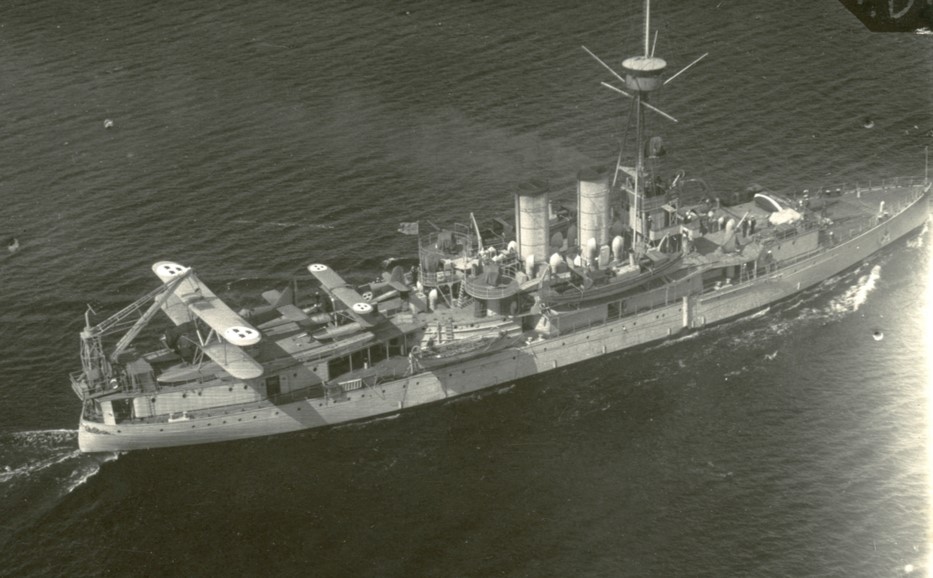
As a seaplane tender.
She served as a seaplane tender for many years, going through ww2 in the fleets reconnaissance department as well as the general coastal fleet. She didnt do much during the war however and was put out of service when the tensions in Europe had fallen to comfortable levels in 1947. From then on out she was used as a gunnery target for the navy up until 1960 where she was damaged beyond repair and sank while being towed on her way to Karlskrona, needing to be walled off and brought up for scrapping the year after, she was finally scrapped in 1961 in Göteborg.
A sinking Dristigheten.
Armament and Stats
Length: 86.9 Meters
Width: 14.8 Meters
Draught: 4.9 Meters
Displacement: 3600 Tons
Speed: 16.5 Knots (Around 30 Kp/h)
Crew: 289 Men
Main armament: 2 x 21 Cm Kanon m/98, each cannon in its own turret with one forward and one stern. They could fire around 1 shell a minute to a range of around 9 km.
21cm shells:
A 120kg SAPBC shell, 775 m/s, 5,73kg filler.
A 125kg APC shell, 750 m/s, no filler.
A 116 kg HE shell, 780 m/s, 9,6kg filler.
Secondary armament: 6 x 15,2 Cm Kanon m/98, single casemates with three on each side of the ship. They could fire around 6-7 shells a minute to a range of around 8 km.
15,2cm shells:
A 46kg SAPBC shell, 770 m/s, 2,6kg filler.
A 46kg APHE shell, 770 m/s, 3,99kg filler.
A 46kg HE shell, 770 m/s, 5,45kg filler.
10 x 57mm Kan m/89B (Two of them were placed in AA mounts). Fire rate of around 20-35 shells a minute with a range of about 5 km.
57 mm cannon’s available shells:
2,7 kg APHE (Steel) shell with 97 grams of filler.
2,7 kg AP-T shell with 60 grams of filler.
2,7 kg HE shell with 230 grams of filler.
All had a velocity of 704 m/s
Torpedoes: Two submerged 45,7 cm Undervattenstorpedtub m/99.
Armor (Taken From Janes fighting ships (1904)): Krupp Armor
Belt: 200mm
Deck: 48mm
Main turrets (21cm): 200mm
Main turret supports: 200mm
Secondaries battery deck (15,2 cm): 91mm
Hoists: 91mm
Conning Tower: 200mm
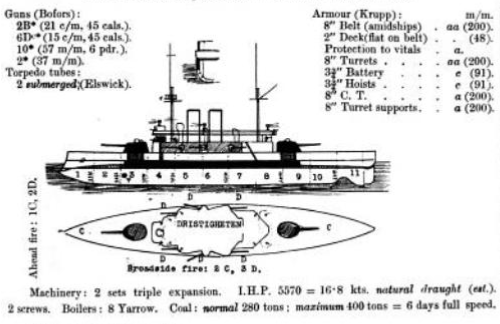
(The 37mm cannons mentioned were carried not on the ship itself but on the two steam sloops she carried with her.)
Sources
Web based:
Dristigheten (1900) – Wikipedia
Jane's Fighting Ships - Google Böcker (Page 289)
680 (Uppfinningarnas bok / V. Metallernas bearbetning, urteknik, lås, vapenteknik)
Written but findable online in pdf forms that i can’t link cause it links to my computer instead:
The book “21 cm. k. M/98.” , Stockholm, K.H. Boströms Boktr., 1906.
The book “15 cm. K. M/98.” , Stockholm, K.H. Boströms Boktr., 1906.
The Swedish naval ammo register, 1947.
